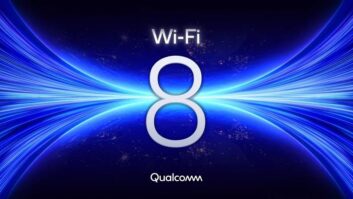A sizzling economy, aggressive store openings, and a rash of new and more affordable digital devices helped sales at the nation’s top 100 consumer electronics retailers surge 14.8% last year to a staggering $74.46 billion.
The double-digit sales spurt comes on the heels of the record revenues generated in 1998, when the 100 merchants who comprised the TWICE Consumer Electronics Retail Registry saw sales hit a revised total of $64.88 billion.
But thanks to the advent of an entirely new class of trade — e-tailing — and a chart-busting holiday selling season, CE’s leading merchants handily outpaced their year-ago performance.
Leading the charge once again was the Big Three lineup of Best Buy, Circuit City and CompUSA. Best Buy, with $11.38 billion in sales, cemented its No. 1 slot for the fourth year in a row and put some added distance between it and second-place sales generator, Circuit City. And despite a taxing year of stunted growth and wholesale restructuring, CompUSA continued to hold on to its now perennial third-place ranking atop the Registry.
Although CE’s A team continued to claim the lion’s share of the spoils, many lower-ranked contenders were standouts for their rapid rate of growth. Among those posting head-turning percentage gains were 46th-ranked H.H. Gregg, whose annual sales doubled to $242 million by adding 15 stores last year, and New York market survivor 6th Avenue Electronics. Thanks to two new outlets and a newfound focus on home theater and custom installation, the six-store chain saw revenues rise 63.7% to $83.5 million, catapulting it from 88th to 68th place.
But even those impressive improvements paled beside the blistering growth rates of the pure-play Internet retailers (see sidebar, page 28). Although coming off a smaller sales base, the dot-com contingent nevertheless delivered warp-drive gains led by 97th place 800.com and its whopping 1,923.1% sales spike.
Also spearheading the sales charge were Roxy.com (No. 93), whose revenues shot up 520% to $31 million, and the burgeoning Buy.com (No. 24), which leaped into the Top 25 with CE sales of $514 million, representing an increase of 324.8% over 1998.
But all was not sweetness and light in CE land. Among the big electronics losers in 1999 were 87th-ranked Fedco, which gave up the ghost last summer, and Lowe’s, which fell to 61st place from 43rd after its abdication of the category early last year halved CE sales to $120 million.
Other precipitous sales drops were evidenced at struggling multi-channeler Damark International (No. 49), whose revenues fell 27% last year to $200 million, and 17th place Service Merchandise, whose CE sales dropped 24.5% to $700 million, presaging its exit from the category this year.
With several notable exceptions, the lineup was largely status quo among the Top 20 players, who together accounted for nearly 85% of total Registry sales.
Joining the roster on the strength of its 30% sales gains was The Wiz, which moved up to 19th place from No. 25. Higher up the food chain, Wal-Mart leapfrogged Sears to assume the No. 5 spot behind RadioShack, and home office leader Office Depot cracked the Top 10 by unseating Kmart from last year’s ninth-place position.
Larger tumbles were taken by OfficeMax, which fell from 10th to 14th place; Micro Center, which went from 15th to 20th; and Creative Computers which dropped out of the Top 20 altogether to 31st place. Each posted steady sales gains but lost Registry ground to more aggressive competitors.
Meanwhile, the industry’s Top 10 retailers continued to consolidate their stranglehold on CE sales. Their combined revenue, a Memory Stick’s-width shy of $50 billion, constitutes almost 70% of the entire Retail Registry and was ahead 15% over 1998’s tally.
Examined by channel of distribution, the Registry’s Electronics/Appliance Stores/Multi-Regional classification – which encompasses Best Buy, Circuit City, Fry’s and Rex – remains the 600-pound gorilla of electronics retailing. The group grabbed $20.79 billion of consumers’ disposable income last year, growing 20.2% and adding a percentage-point notch to its now 30.5% market share.
For Best Buy and Circuit City, their respective sales gains of 24.1% and 16.6% were wrought from a potent blend of rapid expansion, improved store layout and the swelling wave of digital replacement purchases.
Specifically, Best Buy opened 46 new stores, many in previously untapped markets such as San Francisco, and further refined its 45,000-square-foot Concept 4 store format with improved product adjacencies
“We believe consumer preference for our retail format has provided us with growing market share which, combined with the growth of digital products, has improved our annual sales per store to more than $37 million,” noted Best Buy CEO Richard Schulze.
Similarly, the newest of the 29 stores Circuit City opened last year boast such merchandising initiatives as expanded selections of video games, software and peripherals, larger assortments of self-service products, and wider aisles and brighter lighting.
To help narrow Best Buy’s sales lead, CEO Richard Sharp said the chain is “expanding on those initiatives in the new fiscal year with expanded assortments in some stores and new technology displays and demonstrations in all our stores nationwide.”
Sales at Circuit City’s 571 superstores and 45 mall-based Express stores were $8.48 billion last year, compared to the $7.27 billion garnered in 1998.
CE’s next largest CE channel of distribution remains, for the fourth consecutive year, the Mass Merchants category. As defined by TWICE, the sector encompasses such traditional discounters as Wal-Mart, Target and Kmart; discount department stores including Sears and Montgomery Ward; and the junior department store tier, featuring the likes of ShopKo and Fred Meyer.
All told, the group’s sales volume grew 11.3% last year to $15.62 billion, giving it a 21% share of total Registry revenue. But commanding as that may be – better than $1 out of every $5 spent on CE at retail went into mass merchant coffers – the channel remained flat, actually falling six-tenths of a percent from its prior-year share.
Weighing down the sector were the now-defunct Fedco, whose CE sales fell by $47 million year over year, and 22nd-ranked Ward, down $8 million from 1998. Combined with the relatively unexceptional performances of Top 10 mega-merchants Sears (up 8.6% to $3.8 billion) and Kmart (up 6.7% to $2.59 billion), the declines tended to cancel out the double-digit gains of category leaders Wal-Mart and Target.
The world’s largest retailer pushed its CE sales ahead 14% to $3.94 billion, while seventh-ranked Target, coming in a close second at $3.65 billion, grew nearly 16% in electronics revenues last year.
Also turning in a lackluster performance in a year that most CE retailers lauded as their best ever was the Computer Stores group. While still constituting the third-largest channel of CE sales with 11.1% of the market, the $8.29 billion category grew only 6.9% between 1998 and 1999, and actually lost nearly a percentage point of turf to its faster-growing brethren.
That sales for the Computer Store sector slackened is hardly surprising, given the free-fall in PC pricing and the internal turbulence at category leader CompUSA. After slashing its work force, fumbling its e-commerce strategy with the now-defunct Cozone.com, and announcing a 180-degree merchandising shift that de-emphasizes home computers, the struggling business was ultimately bought out by Mexican conglomerate Grupo Sanborns in a turnaround play.
But the weakness wasn’t confined to CompUSA. Same-store sales at 211-unit Computer Renaissance (No. 57) were down 8.2% over the prior year, and both ComputerWare The Macsource (No. 79) and Software City (No. 92) were flat.
By contrast, Home Office Stores, the three-company classification comprised of Staples, Office Depot and OfficeMax, remained the fourth-largest distribution channel for consumer electronics by racking up $7.04 billion in sales, representing a tidy 9.5% market share. Fueled by aggressive store openings, eighth- and ninth-place players Staples and OfficeMax saw their CE sales surge by 25.8% and 18.3%, respectively, while OfficeMax, which opened 114 units of its own last year, nonetheless realized a more modest gain of 8.8%.
Thanks to the boffo performances of leading lights RadioShack (up 15%), Ultimate Electronics (ahead 17.1%), Tweeter (soaring 22%) and Sound Advice (advancing 17.2%), the Electronics-Only category, the industry’s fifth-largest tier, managed to narrow Home Office’s lead to 0.2% last year.
With revenues up 13.2% to $6.94 billion, the group now accounts for 9.3% of Registry sales – a figure that should accelerate as RadioShack rolls out its new RCA and Microsoft in-store shops this year, and Tweeter continues to pursue its growth-through-acquisition strategy.
On the flip side of the coin, the industry influence of warehouse clubs and catalog showrooms waned somewhat in 1999. Weighed down by BJ’s Wholesale’s modest 7.3% gain, market share for the warehouse club gang slipped from 5.1% to 4.9% last year, despite the chart-topping positions of Sam’s Club (moving up a slot to No. 11) and Costco (edging up a notch to No. 13).
Catalog showrooms fared much worse. Total sales for the classification fell 21.3% to $764 million, narrowing its piece of the CE pie to 1% from 1.5% in 1998.
Within this two-player field, 17th-place Service Merchandise, still under Chapter 11 protection, saw its CE sales dwindle 25% to $700 million as it closed 122 stores and announced plans to exit electronics. The declines more than offset Sharper Image’s stunning 45.5% sales spurt to $64 million, which propelled it to 78th place from 94th.













